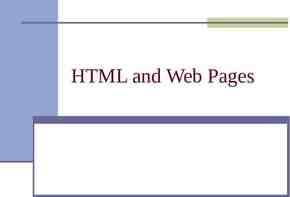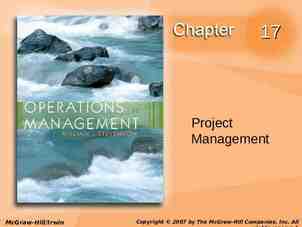E-Business and E-Commerce
28 Slides179.50 KB
E-Business and E-Commerce
Definition: Electronic Business (U.S. Census Bureau) An process that an organization conducts over a computer-mediated network Production – procurement, ordering, stock replenishment, payment processing, production control, etc. Customer-focused – marketing, selling, customer order processing, etc. Internal or management-focused – employee service, training, recruiting, information sharing, etc.
Definition: Electronic Commerce Any transaction completed over a computer-mediated network that involves the transfer of ownership or rights to use goods or services. Completed price. transactions may have a zero
Definition: Electronic-Business Infrastructure The share of total economic infrastructure used to support e-business processes and conduct e-commerce transactions. Hardware Software Telecommunication networks Support services Human resources
Definition: Computer-Mediated Networks Electronically-linked devices that communicate interactively over network channels. Computers, personal digital assistants, web TV Internet-enabled cellular phones, interactive telephone systems Internet, intranets, extranets, telecommunication networks, EDI
New Business Rules from E-Business Customers determine everything. Knowledge and information become more valuable than physical assets. People want more choices of products and services. Time is present time, distance is zero. Technology and network determine how the business is conducted.
What Are the Potential Benefits of E-Business?
Potential Benefits of E-Business More product/service selections Higher Productivity Improved Better accessibility and convenience availability of information Shorter lead time Improved Stronger communication competitive position
Examples of E-Business Applications?
Categories of E- Business Applications (BW, Nov. 24, 2003) Collaboration Customer Service Customization Streamlining Management Cutting Edge
Examples of E-Business Applications Cisco (financial management) Nike (product design) Jet Blue Airlines (customer service & ticketing) Dell Computer (customer ordering & service) Boeing (flight manuals, maintenance documents, spare parts to order) Garden.com (drop ship) AlliedSignal (operations scheduling & supply chain) Starbucks (smart cards & web access)
How Can An Automobile Manufacturer Apply E-Business?
How Can An Automobile Manufacturer Apply E-Business? Sales Customer Supplier Service management Marketing Product Design Financing Employees Training
The Internet’s Influence on Industry Structure – Michael Porter Bargaining power of supplier Bargaining power of buyers Rivalry among existing competitors Barriers Threat to entry of substitute products or services
Launching E-Business Initiatives Define what an e-business initiative means for the organization. Ask key questions to develop a strategy. Communicate the plan to executives and employees extensively. Prepare for mistakes and develop effective recovery systems.
Types of E-Commerce Customer-to-Customer Business-to-Customer Business-to-Business (C2C) (B2C) (C2C Government-to-Business Government-to-Citizens (G2B) (G2C)
Examples of E-Commerce?
Examples of E-Commerce Retailing and Marketing Entertainment Education Banking and Travel and Learning and Investment Health-Care Auction Personal and Business Service
Who Are Potential E-Commerce Supply Chain Members?
Potential Supply Chain Members of E-Commerce End users E-store payment processor Distributors’/Producers’ supply chain Transportation/logistics providers Customer service providers
Application of the Internet in Value Chain (Michael Porter) Improving operational effectiveness versus improving strategic positioning Effects on stages in the value chain Inbound Logistics Operations Outbound Logistics Marketing and Sales After-Sales Service
Basic E-Commerce Strategies (P. Evans & T. Wurster, HBR, 1999) Reach (access and connection with customers) Richness (depth and detail of information to/from customers) Affiliation (advancing customers’ interests)
Key Business Drivers of E-Commerce Internet Information Collaboration Agility Speed Service
Competitive Advantages of E-Commerce Offers personalized products/services Enables customer self-service Reduces lead time Reduces overall cost for seller and customers Improves utilization of resources throughout the supply chain Increases customer satisfaction and loyalty Expands to global marketplace
What Could Be the Tasks Performed by Customers?
Tasks Performed by Customers Browse catalogs Conduct research on products/services Configure and place orders Look up pricing Look up lead time and order status Access invoicing information Access customer service information
B2C E-commerce Implementation Strategies Educate the customer Make the shopping fun Serve customers well Personalize Cross Low the sales pitch sell and up sell price Painless returns
Ways to Improve E-Commerce Operations Technology Business Agile (hardware and software) Process Reengineering production (mass customization) Just-in-time Supply system chain management Business intelligence Customer relationship management

































